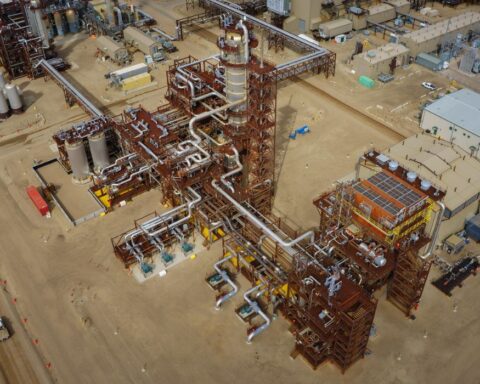Despite claims by many countries that they’re ramping up efforts to cut their greenhouse gas emissions, a first glimpse at emissions data for 2022 shows otherwise.
A new report by the International Energy Agency (IEA) reveals that global emissions rose in 2022. That means major emitters such as the U.S. and China are falling further behind in meeting their climate targets.
“None of these countries are on track for meeting their stated emission-reduction targets,” observes Corporate Knights research director Ralph Torrie. “When the global pandemic hit in 2020, we knew it would cause greenhouse gas emissions to decline, but we hoped the emission decrease could be locked in as economies recovered.”

Globally, emissions need to decrease by 4% every year if we’re going to reach net-zero by 2050. But in reality, emissions rebounded in 2021 and grew again in 2022 by 0.9%, reaching an all-time high of more than 36.8 billion tonnes of carbon dioxide. “That puts us about where we were in 2019, with the ‘say–do’ gap persisting even as the clock ticks down for countries to hit their 2030 targets,” says Torrie.
Last year, Corporate Knights released the Earth Index, a tool that measures the annual progress of G20 countries in achieving their 2030 emissions targets. The G20 is responsible for about 75% of global GHG emissions. The 2022 Earth Index revealed that most countries were far behind.
While there is clear evidence that growth in renewable energy and electrification are moderating global emissions, countries will have to redouble their efforts to decarbonize if they are going to meet their official emission targets.
According to the IEA’s latest figures, the European Union is estimated to have achieved emission reductions of 70 megatonnes (Mt) CO2, or 2.5%, from 2021, which is less than half of the 150 Mt of annual reductions required to meet their 2030 target. The say–do gap is even wider for the United States, where 2022 emissions increased by 36 Mt, or 0.8%, compared to the more than 240 Mt, or 5%, of annual reductions they need to achieve to meet their own target.

China’s emissions in 2022 were 6.5% above their 2019 levels, but the slight decline over the past year points to the possibility that China may yet be able to deliver on its stated commitment to achieve net-zero emissions by 2060.
“Every year we fail to narrow the say–do gap, we increase the hardship and costs that will be faced in the future,” says Torrie.







